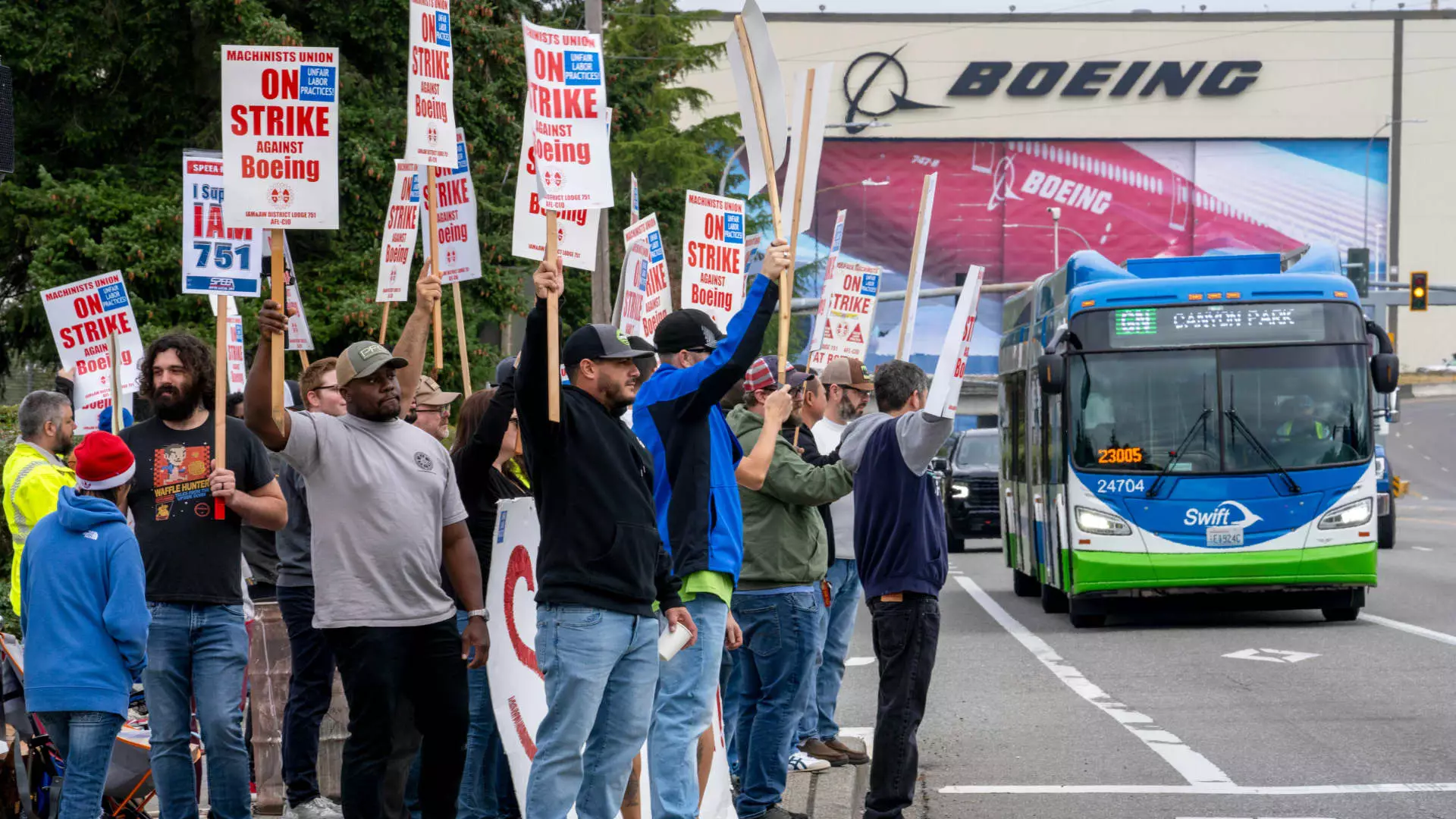Boeing finds itself in turbulent waters as the company confronts a significant machinist strike, prompting a major reassessment of operational strategies. The strike originated from over 30,000 machinists based in the Seattle area and Oregon who voted against a proposed labor contract, leading to a massive walkout early in the morning on Friday. The labor unrest stems from fundamental dissatisfaction regarding wage increases that fail to keep pace with the soaring cost of living in the Seattle landscape, alongside the contentious issue of pension restoration. Such actions mark a critical juncture in labor relations at Boeing, and it raises questions about the future workforce dynamics within one of the largest aerospace manufacturers.
In light of the ongoing strike, CEO Kelly Ortberg characterized temporary furloughs for thousands of employees as a necessary strategy to conserve cash reserves. Under the current circumstances, tens of thousands of Boeing personnel will be affected by this drastic decision, which combines both furloughs and pay cuts for executives. Ortberg’s approach to this crisis demonstrates an urgent need for financial prudence as the company’s debt looms large at approximately $60 billion. The looming worry surrounding cash flow is compounded by the absence of new revenue in light of the workers’ departure, making strategic operational pauses seem unavoidable.
The turmoil has not only financial ramifications but also strains the relationship between Boeing management and union leadership. The union’s terse response reflects a growing sense of frustration with ongoing negotiations — a sentiment echoed in their public communications. Despite Boeing’s offer of a 25% pay raise and union endorsement of the tentative contract, workers felt that it still did not adequately compensate for their increasing living expenses or address pension issues. This friction highlights the importance of transparency and genuine engagement in labor negotiations. The ability of both parties to bridge their differences will be key in transitioning back to normal operations.
Long-Term Implications and Focus on Core Operations
Boeing’s leadership acknowledges that this volatile environment poses substantial long-term challenges, particularly when considered alongside previous crises linked to safety and production quality. As Ortberg indicated, essential activities tied to safety, quality, and customer support – including the production of 787 Dreamliners in a nonunion facility in South Carolina – will continue to receive focus. This prioritization reveals the need for Boeing to not only manage present disruptions but also to prepare strategically for a leadership future that emphasizes safety and reliability.
As Boeing maneuvers through this complex situation rife with labor unrest and financial constraints, the company’s prospects will largely depend on its ability to rebuild relationships with its workforce. Transparent communication about the difficulties faced and efficiently navigating this crisis will be crucial. The management’s proactive approach to preserving cash reserves, coupled with prioritizing essential operations, will undoubtedly determine Boeing’s resilience post-crisis. How the company reconciles its workforce concerns amidst these challenges could set the tone for its operational model going forward, as it faces not only the current strike but any future disruptions that may arise in an evolving industrial landscape.

